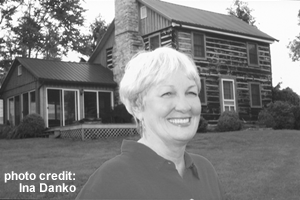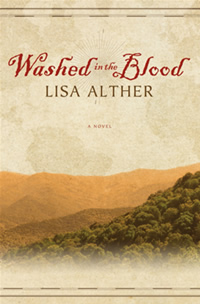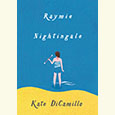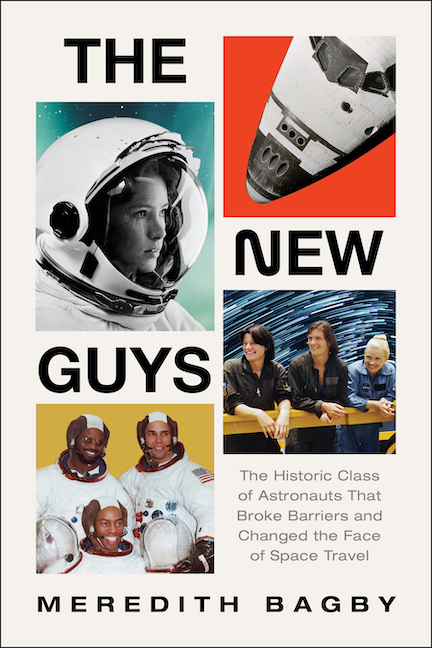True Romance
In Washed in the Blood, Lisa Alther tells a sweeping tale of racial and familial ambiguity
In her new novel, Kingsport native Lisa Alther uses as a plot device the racial and familial intermarriage that was once common in the Appalachians. For many, this aspect of mountain life is fodder for off-color jokes and stereotyping, but for Alther’s subjects, it serves as a survival mechanism. Rather than disappear, Native Americans, former slaves, and dark skinned colonists intermingled with white settlers, passing for white when possible but losing their identities in the process.
Combining the factual relevance of a history book with the intrigue and passion of a romance novel, Washed in the Blood follows the descendants of Diego Martin, a sixteenth-century hog drover who comes to the New World with a Spanish expedition. When Martin is abandoned by his party, he’s forced to reframe all the ideas he once held dear and make his way in a strange and dangerous land. As centuries pass––and Spanish, English, Portuguese, African, and Native American blood becomes increasingly intermingled––successive generations of Martins struggle with notions of identity and the fickle nature of love.
 Washed in the Blood is a novel in three parts. The first concerns the aforementioned explorer, the so-called “Swine King,” Diego Martin. The second is dedicated to Daniel Hunter, a mid-nineteenth-century Quaker schoolteacher who forsakes his Philadelphia fiancée for Galicia Martin, a dark-haired, dark-eyed beauty whom he meets in the hills of Couchtown, Virginia. By now the Martins have melded into their surroundings. Like other families in the area, they are, as Alther writes, “neither fish nor fowl, neither white nor Indian nor African, most probably all three at once.” As such, they are subject to the whims of Easterners and other area whites whose need for land threatens both the family farm and the young lovers’ future.
Washed in the Blood is a novel in three parts. The first concerns the aforementioned explorer, the so-called “Swine King,” Diego Martin. The second is dedicated to Daniel Hunter, a mid-nineteenth-century Quaker schoolteacher who forsakes his Philadelphia fiancée for Galicia Martin, a dark-haired, dark-eyed beauty whom he meets in the hills of Couchtown, Virginia. By now the Martins have melded into their surroundings. Like other families in the area, they are, as Alther writes, “neither fish nor fowl, neither white nor Indian nor African, most probably all three at once.” As such, they are subject to the whims of Easterners and other area whites whose need for land threatens both the family farm and the young lovers’ future.
Part three tells the story of Will Martin and Galicia Hunter. At this point, the Martin clan has split in two: the merchant side, who live in Couchtown, and the farming side, who live on nearby Mulatto Bald. Neither side is aware of their ancestral background, and both deny any connection to each other. Will is a Martin from the Bald, and Galicia, Daniel Martin’s granddaughter, is from Couchtown. Not realizing they are cousins, the two marry and start a family, moving to a nearby industrial center where they become prominent citizens. When Will’s son from a teen romance appears on their doorstep, Will and Galicia must come to terms with their shifting affections––and the fact that forbidden love may split the Martin clan once again.
 Alther, the internationally bestselling author of Kinflicks and Original Sins, among other novels, is a stickler for historical accuracy. Using meticulous research, she leads the reader through a plausible set of circumstances based on accepted genealogical theories and anthropological studies. The fear Will and Galicia Martin feel about their offspring’s skin color, for example, would have resonated with Reconstruction-era mixed-raced people, for whom skin color determined social status. As Southern whites struggled to gain control over recently emancipated blacks, the issue of skin color became more important than ever; for them it was therefore preferable––but less plausible––to claim to be of Indian or Portuguese descent. Will and Galicia make no such claims––though they aren’t passing for white, either, “Because passing implied that you knew you were black and were masquerading as white,” Alther writes. “But he and Galicia had no idea who they really were.”
Alther, the internationally bestselling author of Kinflicks and Original Sins, among other novels, is a stickler for historical accuracy. Using meticulous research, she leads the reader through a plausible set of circumstances based on accepted genealogical theories and anthropological studies. The fear Will and Galicia Martin feel about their offspring’s skin color, for example, would have resonated with Reconstruction-era mixed-raced people, for whom skin color determined social status. As Southern whites struggled to gain control over recently emancipated blacks, the issue of skin color became more important than ever; for them it was therefore preferable––but less plausible––to claim to be of Indian or Portuguese descent. Will and Galicia make no such claims––though they aren’t passing for white, either, “Because passing implied that you knew you were black and were masquerading as white,” Alther writes. “But he and Galicia had no idea who they really were.”
Alther’s careful attention to historical accuracy does occasionally slip. Daniel Martin’s potential mother-in-law, for example, has a suspiciously enlightened view of race: “[T]he way we have dealt with the Indians and the Africans has robbed this country of all that early promise.”
But such whimsy is acceptable in historical romance, which gains its narrative power by placing anachronistic figures in historically challenging circumstances.
Alther’s insights into the history and culture of Appalachian life are crucial and well-researched, but the language of romance proves to be her great strength. Consider, for example, Daniel Hunter’s conflicting emotions for his fiancée, Abigail, and his paramour, Galicia. “Both were thrilling for him after a lifetime of depravation,” Alther writes. “With Galicia he dove deep to explore underwater caverns. With Abigail he was swept over a waterfall, clinging for dear life to a raft of bucking flesh.” Alther’s depictions of forbidden lust and star-crossed love retain the subversive character that typifies the work of such masters of the genre as Jane Austen or Nora Roberts: true love is attained only if one remains true to oneself. More than that, though, even with its hardships, bigotries, and genealogical confusion, Alther makes antique Appalachia seem like a pretty sexy place. Old times there are not forgotten, indeed.


